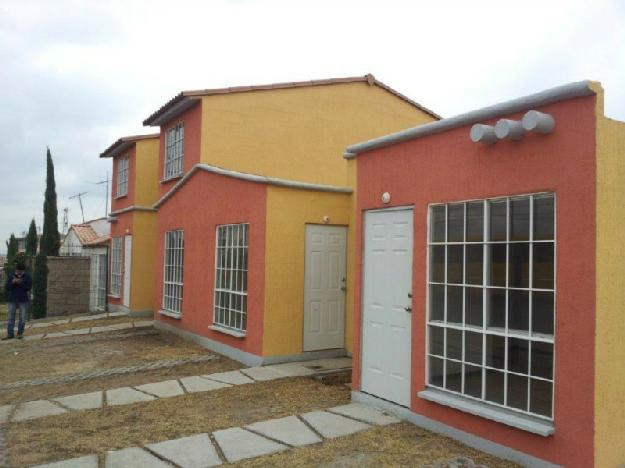Mexico's Subsidized Housing: Good Idea Turns Into Disaster

Stepping into La Trinidad suburb in the town of Zumpango, Mexico, is like entering a ghost world. Streets of identical rows of houses line up, but there is barely anyone walking around. La Trinidad is one of the Ciudades Bicentenario, a failed government project launched in 2007 to improve subsidized housing in the country.
La Trinidad was the first of five projected Ciudades Bicentenario, or Bicentennial Cities. (Mexico's War of Independence began in 1810.) Of the 73,400 units that were built, 29,300 are empty. And those that are still in use have turned into a place to run away from, or to resign to live in. Antonina López, one of the few inhabitants of La Trinidad, jokes when remembering the day she moved in. “It was so small, we thought we only had room for either the beds or us. How disappointing,” she told the Spanish newspaper El País.
Her neighbor, Silvia Martínez, agreed: “They made it look so good.” Martínez moved to La Trinidad hoping to leave something for her children to inherit. She moved from a shared house in Mexico City, with her husband and three sons, to an apartment that turned out to have just one room and a kitchen so narrow that only one person at a time fits in it.
Martínez bought the house with help from the Instituto del Fondo Nacional de la Vivienda para los Trabajadores (Institute of the National Fund for Workers' Homes, or Infonavit), which is the state-owned mortgage provider. Martínez calculated it will take her 15 years to pay off the loan of 600,000 pesos (approximately $45,800).
The failure of Ciudades Bicentenario illustrates the housing problem in Mexico. In the whole country, there are 5 million unused housing units out of a total of 35.6 million, according to a report by Spanish bank BBVA (MCE:BBVA). Around 300,000 are considered “abandoned houses” by the Urban Development Ministry -- meaning that they are vacated, unpaid for, and in a deteriorated state.
In Martínez’s street, half the units are abandoned. Some have been broken into, and the sinks and doors have disappeared.
The biggest problem with La Trinidad, along with the rest of Ciudades Bicentenario, is distance. They were built where land was the cheapest, far away from city centers. “We call this model of town DDD: distant, dispersed and disconnected,” said Luis Zamorano of CTS Embarq, a Mexican NGO working with construction companies to build more accessible cities.
Architect Arturo Ortiz calls this model “anti-cities.” “These places are like islands in the middle of nowhere. There is nothing to do there, nothing to go out for,” he explained to architecture magazine Ensamble.
Mexican real estate is in deep crisis. The six biggest agencies have a collective debt of $2 billion, according to a June report by Standard and Poor’s. Government help is not forthcoming; President Enrique Peña Nieto’s administration has made it clear that it is not one of its priorities.
© Copyright IBTimes 2024. All rights reserved.





















